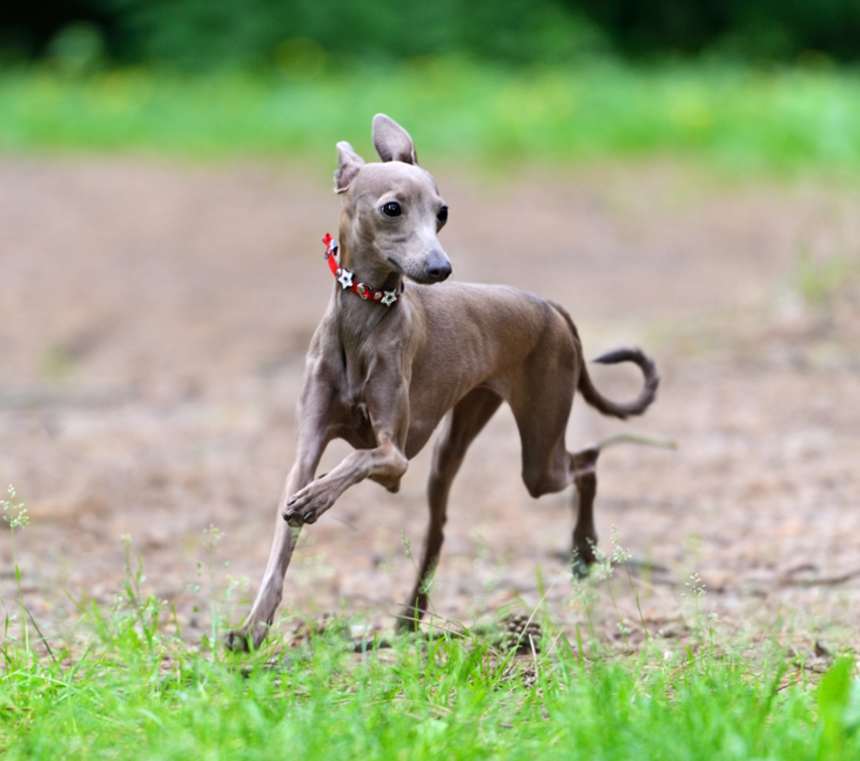Do Italian Greyhounds have health problems?

Like all purebred dogs, Italian Greyhounds can be at risk for several hereditary conditions. While not all Italian Greyhounds will experience these health problems, it can be helpful for you as a pet parent to be aware of them. Below, you'll find some of the genetic health issues:
- Eye problems: One common problem Italian Greyhounds face is eye problems including scratched corneas; corneal ulcers, when the deeper layers of the cornea are lost due to injury or foreign objects; cataracts, cloudiness in the eye and obstructs vision; and progressive retinal atrophy (PRA), a disease that affects the retina that eventually leads to blindness. Taking your pet in for eye examinations and genetic testing can help keep track of their eye health.
- Portosystemic liver shunt: Portosystemic shunt (PSS) is a hereditary issue that obstructs proper blood flow to the liver. Because the liver is responsible for detoxifying the body, PSS sends the toxins in unfiltered blood to the heart, brain, and other body parts. Signs can include but are not limited to, behavioral changes, loss of appetite, hypoglycemia (low blood sugar), jaundice, urinary tract problems, vision problems, and stunted growth. PSS can be life-threatening if not treated early. Antibiotics and diet changes can help in the short term, but surgery is the only permanent treatment for the problem.
- Von Willebrand's disease: Von Willebrand's disease (vWD) is the most common inherited bleeding disorder seen in dogs. It happens when a dog does not produce enough of a specific protein that helps the blood cells used in clotting stick together. Because of this, dogs are unable to clot properly, which could cause hemorrhages or other bleeding issues. The deficient protein is called the von Willebrand factor (vWF).
- Patellar luxation: This is a condition where the kneecap (also known as the patella) dislocates or moves out of its normal range. It can cause lameness or discomfort and might require surgical intervention in severe cases.
- Legg-Calvé-Perthes disease: This degenerative hip joint disorder can cause pain, lameness, and arthritis in the affected hip joint. It might require medical management or surgical treatment.
- Dental problems: Like many small dogs, Italian Greyhounds are prone to dental issues, such as periodontal disease, due to their small mouths and crowded teeth. Brushing their teeth daily, providing dental chews or toys, and scheduling professional dental cleanings at your vet can help maintain their oral health.
- Hypothyroidism: This common endocrine disorder in dogs occurs when the thyroid gland does not make enough thyroid hormone. Typical signs of hypothyroidism in dogs can include weight gain, lethargy, hair loss, and skin problems. Lifelong medication and regular monitoring are typically required to manage the condition.
- Hip and/or elbow dysplasia: Hip and elbow dysplasia are two of the most common skeletal diseases seen in dogs. They are similar diseases in which either the hip or elbow joint has grown abnormally or is misshapen. The abnormal shape prevents the joints and sockets from properly meeting one another, resulting in rubbing and grinding instead of sliding smoothly. If you are rescuing an Italian Greyhound, have them checked out by a vet to see if they have or are prone to getting dysplasia, so you know what they will be able to do for activities and exercise.